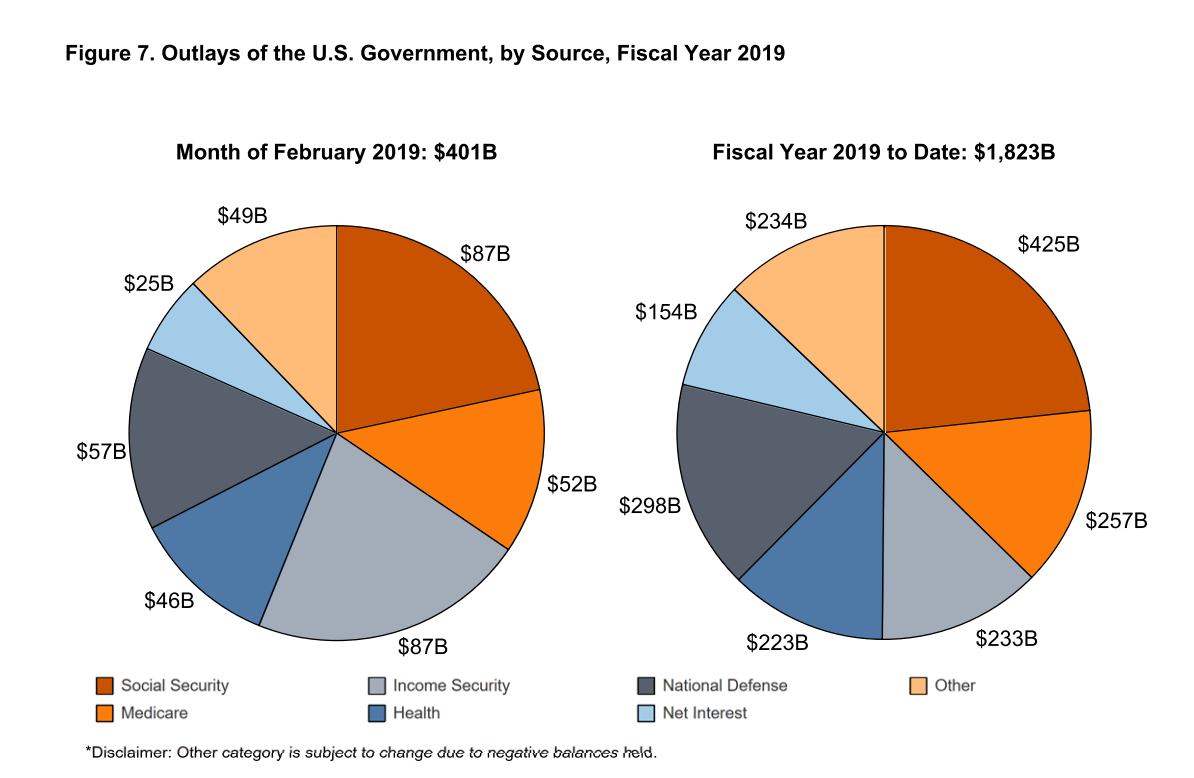
Trump Administration Runs Biggest Monthly Deficit in History in February
By: Mike Maharrey
The Trump administration ran an all-time record deficit of $234 billion in February, according to a Treasury Department report released on Friday.
According to Business Insider, the February 2019 deficit topped the previous high of 231.7 billion set in February 2012.
The budget deficit for fiscal 2019 (beginning Oct. 1) totals $544 billion. That represents a 39 percent increase over the same period in fiscal 2018. According to Treasury Department numbers, tax receipts are down 1 percent, and spending has increased 9 percent so far in the current fiscal year.
Total spending in February came in at $401 billion. Uncle Sam has spent over $1.82 trillion through the first five months of fiscal 2019.

Meanwhile, the federal government collected $167 billion in February. Revenues have been flat since the begging of the year. The Washington Post called this “an unusual phenomenon” given that the economy is growing.
That’s because the 2017 GOP tax-cut law has not led to the huge increase in tax revenue that President Donald Trump, Treasury Secretary Steven Mnuchin and many Republican lawmakers had promised would eventually occur.”
Last month, the national debt topped trillion. When President Trump took office in January 2017, the debt was at $19.95 trillion. That’s a $2.06 trillion increase in the debt in just over two years.
The current budget deficit is well ahead of Congressional Budget Office projections. The CBO estimated the 2019 budget deficit (government spending over revenue) would come in at $897 billion. That would be a 15.1 percent increase over the 2018 deficit of 9 billion. (If you’re wondering how the debt can grow by a larger number than the annual deficit, economist Mark Brandly explains here.) According to the CBO, the deficit will hit $1 trillion by 2022 and remain at that level or higher through 2029. Keep in mind, the CBO tends toward conservative projections. At the current rate, the federal government may well run a $1 trillion deficit this year. In fact, the Treasury Department’s deficit projection for fiscal 2019 was higher than the CBO’s, coming in at $1.085 trillion.
Although the economy is supposedly in the midst of a boom, U.S. government borrowing looks more like we’re in the midst of a deep recession. The only other time the federal government has run deficits this high was during the four years from 2009 through 2012 when the Obama administration boosted spending to grapple with the 2008 financial crisis.
Pres. Trump’s proposed budget does nothing to slow the growth of the national debt. As Reason reported, the proposed Trump budget would practically guarantee $1 trillion annual deficits until 2030. The budget appears to balance in 15 years, according to a summary by ZeroHedge. But this assumes 3 percent economic growth over that time span. The US economy didn’t even hit 3 percent growth in 2018 – a year in which the economy was supposedly booming. On top of that, debt retards economic growth. Studies have shown that GDP growth decreases by an average of about 30 percent when government debt exceeds 90% of an economy. By some estimates, US debt already stands at around 105% of GDP. Ever since the US national debt exceeded 90 percent of GDP in 2010, inflation-adjusted average GDP growth has been 33 percent below the average from 1960–2009, a period that included eight recessions.